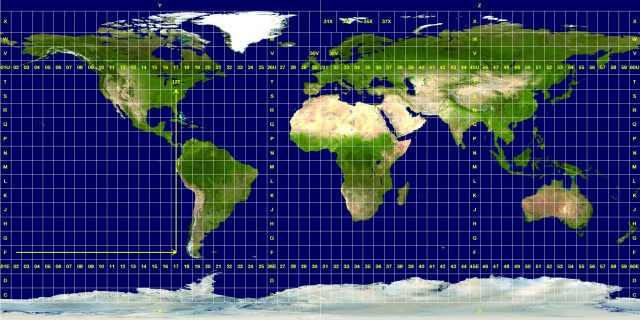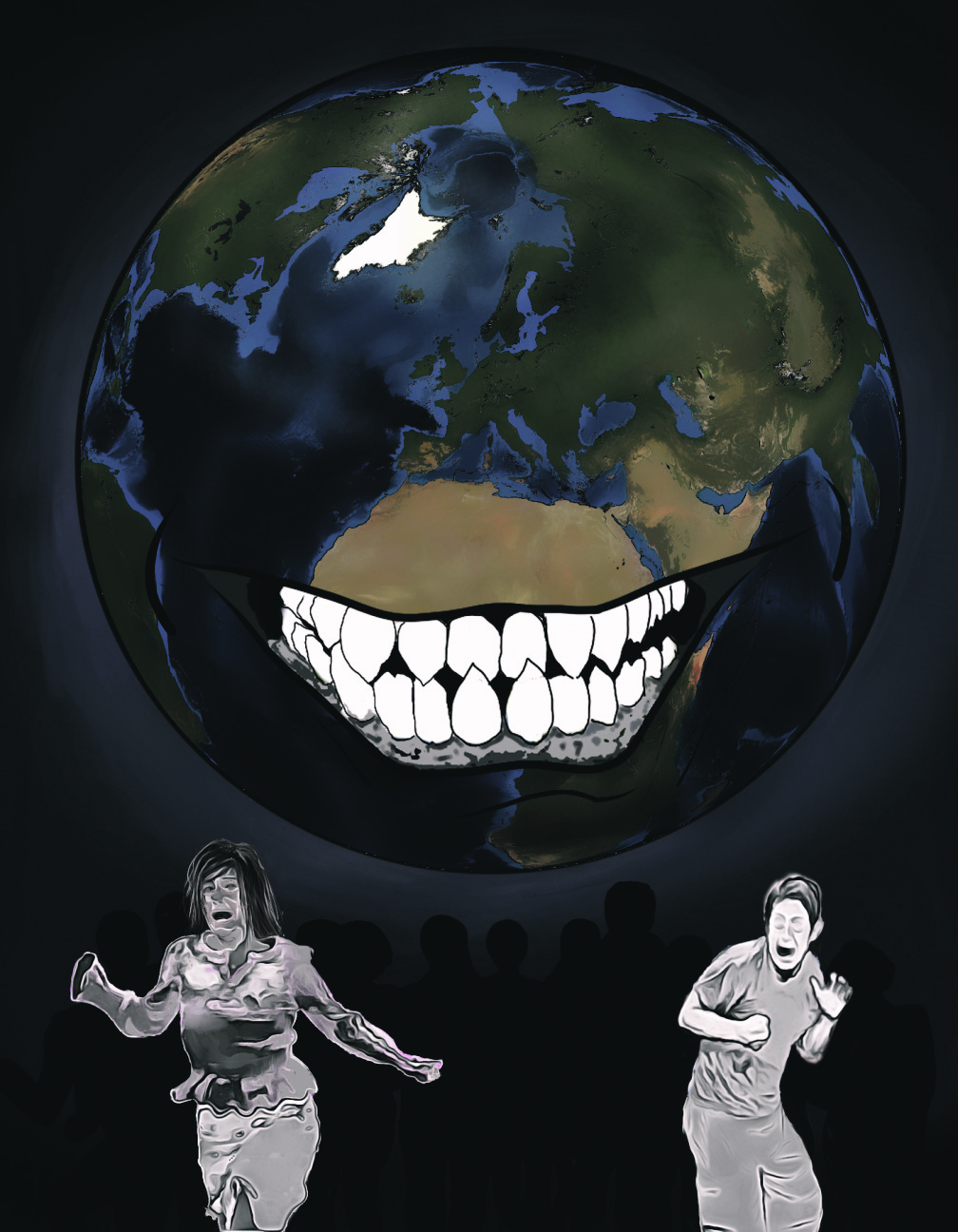It was a cool Monday morning toward the end of September, and I was running late. Dribbles of coffee cascaded over my fingers as I gripped my grey travel mug and cursed silently to myself. I hurried down Sherbrooke, through the Roddick Gates and into Burnside Hall, where the elevator greeted me with open doors. Only after pushing the button for the fourth floor did I slide my hair behind my ears and regain some of my composure.
My heels clicked unnecessarily as I made my way to room 426. I was about to make an embarrassingly tardy entrance to the first faculty meeting of the year of the Department of Geography, my first in my new capacity as co-president of the McGill Undergraduate Geography Society. From the doorway, I scanned the room for available seats – nothing easily accessible.
A delicate round of applause ensued, and I took the chance to sneak toward a seat in the otherwise empty front row. I focused all my energy on being inconspicuous, while intermittently bumping a nearby coffee table as I crossed and uncrossed my legs. Soon after, the department chair had us – the undergraduate and graduate student representatives present at the meeting – introduce ourselves to the room full of faculty members. It was only at this point, as I stood up from the safety of my seat, that I surveyed the room and realized that I was surrounded almost exclusively by older white men.
So what is geography, anyway?
Geography is the study of people, physical environments, and the relationships between them that shape our world. Some of the earliest evidence of cartography can be found in the ancient civilizations of the Middle and Far East, but it wasn’t until the 16th century in Europe that geography developed as a formal field of study to serve the interests of the expanding navigation industry. Over time, geography widened tremendously in scope to encompass just about anything that can be studied as a spatial process – from glacial flows to global trade patterns, to gender performativity, to climatology. It has evolved into a multidisciplinary field, with no single, unified definition. Some of this diversity in subject material is reflected at McGill’s Department of Geography. Courses ranging from Urban Social Geography to Advanced Fluvial Geomorphology compel many students to take electives in this department and learn more about the social and physical processes that shape our world.
Many geography students feel a strong sense of pride in their department. Its strong sense of community, the popular Geographic Information Centre (GIC), and the homey undergraduate student lounge make for a fairly intimate setting within the broader institution of McGill. In our experience, when we tell people what we study, we are met with enthusiastic expressions of approval. This enthusiasm and pride, however, comes with little to no awareness of the violent history that the discipline is founded upon, and how this violence manifests itself today.
The untold past
The development of geography as a discipline occurred directly alongside the rise of European colonialism. In the 16th and 17th centuries, the methods and tools of map-making were combined with other descriptive techniques to facilitate the navigation, exploration, and eventual domination of many parts of the Americas, Asia, and later Africa. Explorers would compile detailed accounts of the flora, fauna, landscapes, resources, and peoples of the regions they visited. This catalogued information was packaged and presented to authorities in colonizing countries in the form of maps and ‘guides’ to foreign areas and peoples. It was also used as the basis of the earliest courses in regional geography.
Geography proceeded in this vein until the 20th century, when the American Office of Strategic Services, the precursor to the CIA, started to hire geographers. It was at this time that geography carved a niche in the intelligence community. Geographers were simultaneously revising their discipline to incorporate more active research methods to counteract the supposedly passive and unengaged methods previously employed, which revolved mostly around cataloguing with minimal critical engagement.
In GEOG 201 (Introduction to Geographic Information Systems), the only class all geography – both BA and BSc – students are required to take, the primary focus is the creation of the conventional ‘world map’ that we are all familiar with. However, there is little critical engagement with the map. For example, while all paper maps inherently distort the shape of continents on the earth given that the earth is a spheroid – an imperfect spherelike body – the commonly used Universal Transverse Mercator (UTM) projection map distorts North America and Europe specifically to take up more space on this map than they actually occupy. This map is also laid out so that North America and Europe take centre stage, minimizing the true sizes of countries closer to the equator and forcing them to the periphery. The UTM map, which many of us internalize from a young age as the absolute depiction of the world, serves little purpose outside Europe and North America. While intense emphasis was put on obtaining data to create accurate maps of colonized or potential colonial territories during the colonial period, the map that was ultimately privileged and given the highest credence in academia obtained this status because of its spatial and conceptual West centrism.

The Present Situation
Although colonial expansion began hundreds of years ago, it is still ongoing today through various means: the exploitation of Indigenous lands in Canada through resource extraction, the expanding influence of multinational corporations worldwide, and their race to purchase large parcels of land in the poorer parts of the world are some of many such examples. One critical sub-discipline of geography – postcolonial geography – concerns itself with the questions of whether and how geography can redress its complicity in being instrumental to the colonial project, which continues today. A central assertion of this school of thought is that if geography is to move beyond its violent origins, it is necessary for its colonial complicity to be widely exposed.
So why does this violent past remain concealed in class to the vast majority of geography students at McGill and many other Western universities? The only geography course at McGill that gives students some of the tools to make educated analyses about the colonial past of their discipline is GEOG 381 (Geographic Thought and Practice). This is a small seminar-based course designed specifically for students pursuing the Honours program, which requires a minimum GPA of 3.3. It is also the only geography course that exposes students to numerous critical pockets of geography: feminist geography, queer geography, postcolonial geography, and Marxist geography are a few of many. Additionally, it is the only class that formally encourages students to critically reflect on the ways their own positionality within various power structures, such as race, class, gender, and other identities, impact the ways they design and carry out their research projects.
Why is it that knowledge about the origins of geography and its potential for harm is relegated to a small class only accessible to students in a program that requires a certain level of academic attainment? And why aren’t we asking our students to incorporate this level of self-reflection into their geographies until their second semester of their third year, after over half of their program is completed? We can hardly claim to be acquainted with our past (and present) affiliation with the colonial project when the vast majority of students are uninformed about how and why their discipline was first created. Why isn’t this knowledge accessible to all of McGill’s geographers?
Perhaps it is because of the nature of geography’s emergence, originally developed to be used as a vehicle for the colonial project, that geography as a discipline suffers from intense and often unacknowledged Western bias and sense of superiority. In geography’s past, ideal research methods involved geographers from Europe (and later the U.S. and Canada) travelling to ‘discover’ distant places and catalogue the peoples living there, as well as their livelihoods and practices, often to later exploit them for slavery, natural resources, and more recentely, cheap labour markets and manufacturing.
Geography students have a responsibility to educate themselves about the historical context of the discipline we’re often too quick to be proud of. Beyond that, however, the history of geography should be incorporated into the curriculum of every geography major and minor program and taught in a course sequenced in a student’s first semester of the program. This could be accomplished by integrating information about colonialism in mapping into GEOG 201 (Introduction to Geographic Information Systems (GIS)) while expanding the conversation to other parts of geography. This would also provide an alternative to establishing a totally new mandatory course to educate students on the history and theory of the discipline specifically (an absurd idea, right?).
Hopes for the future
Where geography is currently situated on the postcolonial spectrum is a topic of much debate. While some scholars argue that geography has broken free of its colonial past, the general mood of geographers currently reflects a more tenuous relationship with its origins that needs to be explored and made explicit. Considering that access to this knowledge is restricted in the first place, how can geography students at McGill be expected to interact with this discourse in a meaningful way? Why are radical geographies marginalized, and a normative, West centric view of geography propagated in our department?
These questions highlight the disconnect between those in power in the Department of Geography at McGill and the students on the receiving end of the curricula. Ultimately, by propagating the normative geographic agenda, McGill extends the reach of colonial legacies further into the future of geography. By relegating access to alternative geographic theories to a select few students, McGill geography actively hinders students from participating in the most pressing contemporary debates, and at what cost? Geographers naively come into the discipline without the skills to substantively impact geographic discourse, and this is a shame.
Let’s revisit the faculty meeting for a minute.
While the landscape was dominated by older white men, the dialogue was largely driven by women. If you were in this meeting with your eyes closed, you may have thought that the gender representation was skewed toward women because of the amount of space women carved out during periods of discussion. Additionally, women dominate the administrative positions in the department, and the majority of student representatives are women.
The goal here is not to disparage the Geography department, but to make legible the colonial complicity and the ever-present colonial legacies in geography, and specifically at McGill, and by doing so encourage you to look more critically at the origins and composition of your own department. Does your area of study harbour a colonial past? Do you even know what the roots of your study are? Do you see yourself represented in the faculty of your department? If not, why do you think that is?
These aren’t the questions we’re trained to ask as students. Instead, we’re trained to ask questions that focus on the academic debates of our discipline without invoking reflexivity toward structures of power. This deterioration in our ability to critically think about our discipline and its impacts has lead to the weakening of resistance to dominant values in academia.
Lillian Fradin is a U3 Honours
Geography Student.
